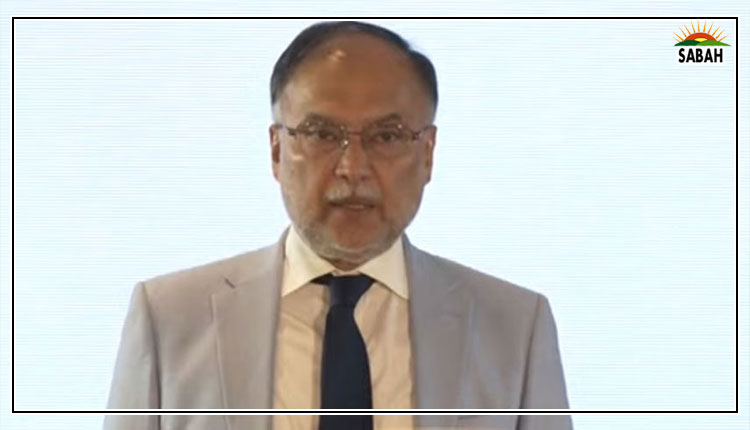Pakistan as a solution to the Chinese demographic problem…Shahid Javed Burki
Pakistan borders two of the worlds most populous countries India and China. Until a few weeks ago, China had more people than India but then the latter, with a higher rate of population growth, went past China and became the worlds largest country. Does it matter that Pakistan borders these two mega-population countries? I will argue in this article that the demographic changes in China offer Pakistan opportunities it could and should exploit but that would need well-informed and well-thought-out public policy. At this point to would be appropriate to a go a bit into history.
Mao Zedong, the founding father of modern China and the countrys supreme leader for 27 years, was apprehensive that at the rate at which the countrys population was growing, China would not be able to feed itself. He had a strong belief in self-reliance. He did not want the countrys population to reach the point at which it will have to depend on imported food to provide enough nourishment to a growing population. In the last few years of Maos rule of China, the countrys population was growing at more than 20 million a year.
Under Maos stewardship, the country had been through two famines; the first in the late 1950s, a decade after the Communist Party of China had taken full control of the country. Mao was in a hurry to make China an important country on the global scene. He wanted to industrialise the country while remaining self-sufficient in food. The Mao approach resulted in the adoption of the policy the history knows as the Great Leap Forward. The idea was that the principle of self-reliance would apply not only to the entire country but to individual households as well. Families would produce within the confines of their homes and the small bits of land that had been left with them after collectivisation. The result of the policy was a plunge in food production that had the Chinese go through first of the two famines during the Mao era. Millions of people died of starvation.
Mao reacted to the crisis by adopting what came to be called the one child policy. No Chinese couple could have more than one child. Second pregnancies were aborted. Abortion became common and with the strong preference for male children, the Chinese aborted girls leaving the country with a highly skewed gender imbalance. In 2022, China had a sex ratio of 104.69 men to every 100 women. It reached a point where it began to import girls from neighbouring countries the Chinese men could marry.
The one child policy produced results Mao would have appreciated. On February 17, 2023, Chinas Bureau of Statistics announced a decline of 850,000 people, bringing the total population to 1.4118 billion the first such decline in 60 years. The birth rate reached its lowest level on record, 6.77 per 1,000 people down from 7.52 in 2021. The last time Chinas population declined was in 1961, after three years of Maos disastrous Great Leap Forward industrial policy. Although long predicted, the decline in population arrived sooner than expected. Leading Chinese scholars and the United Nations estimated as recently as 2019 that the downward trend would not begin until early in the 2030s. The decline in the rate of growth of population results in its ageing. This has serious economic consequences as experienced by Japan over the last couple of decades. Japan is now the oldest society in the world with 29% of the countrys population over 65. With a comparably contracting work force, China too could fall short of the ambition to become a global leader.
Even though experience has shown that state policies directed at changing population growth rates seldom produces the intended results, the Chinese cities are attempting to increase the rate of population growth. For instance, Shanghai last year gave mothers an additional 60 days of maternity leave on top of state-mandated time off; paternity leave was extended to 10 days. Shenzhen on January 17 became the latest Chinese city to give out almost $1,500 for couples who had a third child. Beijing, in other words, has come a long distance when Mao, the Supreme Leader, attempted to drastically reduce the birth rate.
There is now an urgency being attached to bringing change in demographic trends as President Xi Jinpings policy of national rejuvenation depends on a large, growing and well-educated population. He has sought to tackle the long-term economic and social pressures from a shrinking, ageing society by lifting the limits on family size imposed by some of the countrys earlier leaders. He has taken steps to build a strong social safety network and announced a new phase of high-quality growth less dependent on legions of cheap, abundant migrant workers from the countryside. The population issue is the most important issue for the future but is the one that is most easily neglected, Ren Zeping, a former chief economist for the Evergrande Group, a massive housing developer, who has studied the looming demographic crunch, wrote in widely circulated comment after the population numbers were released on February 17.
One of the options available to China to address the worker-shortages it has begun to experience is to import people from the neighbouring countries, from a country such as Pakistan which has one of the youngest populations in the world. As is well known, China built its economy initially by exporting labour-intensive products to the West. However, rapid development has resulted in higher wages. Several Chinese enterprises have moved their operations to labour-surplus countries such as Laos, Cambodia, Thailand and Indonesia. Chinese enterprises have not come to Pakistan as they consider the general public is not welcoming. Some of the anti-China sentiment that has been created is the result of Indian endeavours where articles are written and sold to Pakistani authors who are prepared to publish them under their names.
However, the country is experiencing another kind of worker shortage. With its technological sector rapidly developing, China needs large number of well-educated and trained workers. With a concerted effort that is made by the government working with the private sector, Pakistan could produce the well-trained and educated work force the Chinese need. Japan with worker-shortages that are also the result of demographic change has begun to import Indian workers who have graduated from the well-known science and technology institutions the country has established over the last six decades. Pakistan could follow the Indian example.
Courtesy The Express Tribune











